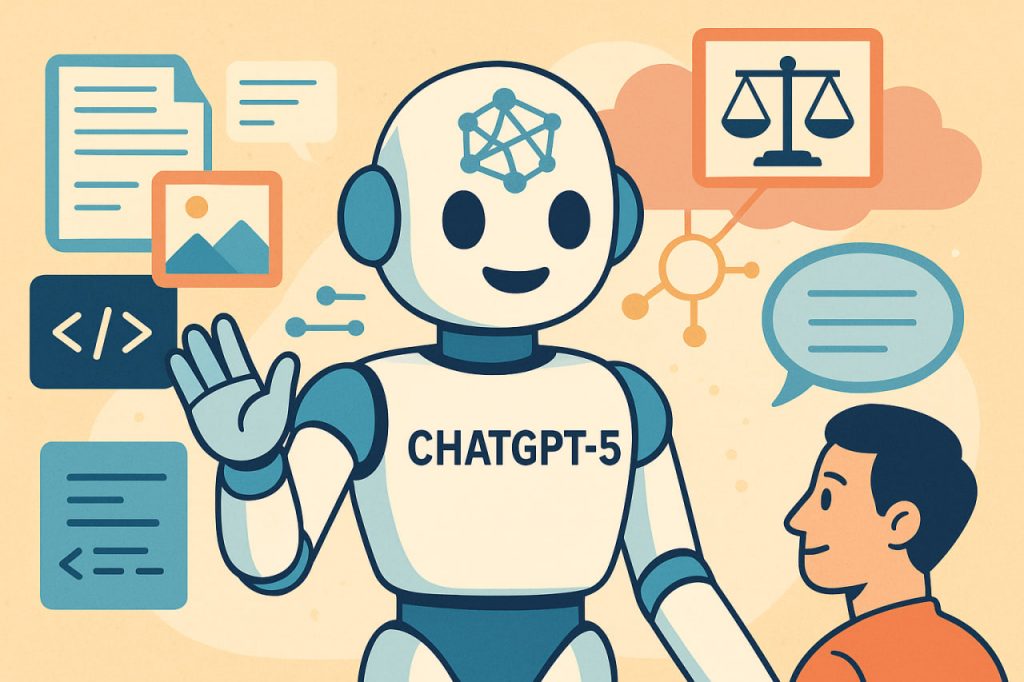ChatGPT-5 represents a significant evolution in the field of artificial intelligence, pushing the boundaries of what AI can understand, generate, and do. As a successor to GPT-4, it demonstrates major improvements in reasoning, context retention, and multi-modal capabilities. While GPT-4 was already a powerful language model, GPT-5 builds on its architecture by incorporating more advanced training data, better fine-tuning, and expanded context windows. These enhancements allow it to understand more complex queries, hold longer and more coherent conversations, and produce responses that are contextually rich. ChatGPT-5 also boasts better understanding of visual inputs, audio, and code, making it more versatile across various applications. The model can be integrated into tools like voice assistants, search engines, customer service bots, and even scientific research platforms. Its development marks another major step toward seamless human-AI collaboration.
Technological Improvements Over GPT-4
One of the key improvements in GPT-5 is its ability to process longer context windows, meaning it can remember and refer back to more of what has been said in a conversation. This allows users to interact with the model in more natural and meaningful ways. The architecture has been optimized for multi-modal inputs, allowing it to better handle combinations of text, images, diagrams, and even speech. GPT-5 also shows progress in logical reasoning, mathematical problem-solving, and code generation, outperforming its predecessors on benchmark tests. The training dataset is larger and more diverse, which improves its understanding of rare topics and languages. It also features more robust instruction-following and can handle subtle nuances in tone, implication, or emotion. This makes it more adaptable to specialized professional use cases such as legal writing, medical explanations, and technical consulting.
Real-World Applications
With ChatGPT-5, the real-world applications of AI become more practical and impactful. In education, it can serve as a personalized tutor, capable of explaining complex topics across disciplines. In healthcare, it may assist with diagnostic support or patient communication, though it’s not a replacement for medical professionals. Businesses are integrating GPT-5 into customer service platforms to provide real-time, intelligent responses with a human-like tone. In creative fields, it helps authors brainstorm, musicians compose lyrics, and designers receive feedback on their work. Developers use it to write, explain, and debug code, while scientists use it for literature review and data interpretation. Governments and NGOs may deploy it in areas like policy drafting, translation, and public outreach. Its wide range of capabilities shows how GPT-5 is not just a tool for chat—it’s a general-purpose assistant for both individuals and institutions.
Concerns and Ethical Considerations
As with any powerful technology, GPT-5 raises questions about ethics, misuse, and bias. While efforts have been made to reduce hallucinations and factual inaccuracies, the model is not infallible. It may still generate incorrect, misleading, or biased information depending on the prompt and context. There are also concerns about job displacement, especially in fields where automation is rapidly advancing. Content moderation, misinformation, and AI impersonation remain pressing issues. Developers must ensure responsible deployment, including transparency, user consent, and safeguards against misuse. Regulatory discussions around AI are intensifying as policymakers struggle to keep up with the speed of development. OpenAI and its partners stress the importance of alignment—ensuring that the model behaves in a way that is safe, predictable, and beneficial to humans.
Conclusion
ChatGPT-5 is not merely an upgrade—it’s a milestone in the ongoing journey of artificial intelligence. With enhanced memory, better reasoning, and support for multi-modal interactions, it offers unprecedented potential across education, science, business, and creativity. However, this power comes with responsibility. As AI tools like GPT-5 become more integrated into society, the focus must remain on ethics, safety, and human-centered design. With thoughtful use, this generation of AI could reshape how people learn, work, and communicate—paving the way toward a smarter and more connected future.
Glossary
- Language model — an AI trained to understand and generate human language.
- Multi-modal — the ability to process input from different sources like text, images, or audio.
- Context window — the amount of previous text or conversation the model can remember.
- Alignment — making sure an AI system behaves according to human values and intentions.
- Instruction-following — a model’s ability to respond accurately to user commands or questions.
- General-purpose assistant — a tool capable of performing a wide range of tasks across domains.


